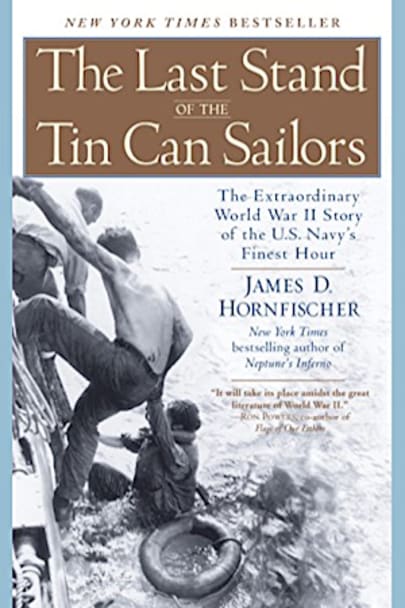BONUS: This edition includes an excerpt from James D. Hornfischer’s Neptune’s Inferno. “This will be a fight against overwhelming odds from which survival cannot be expected. We will do what damage we can.” With these words, Lieutenant Commander Robert W. Copeland addressed the crew of the destroyer escort USS Samuel B. Roberts on the morning of October 25, 1944, off the Philippine Island of … off the Philippine Island of Samar. On the horizon loomed the mightiest ships of the Japanese navy, a massive fleet that represented the last hope of a staggering empire. All that stood between it and Douglas MacArthur’ s vulnerable invasion force were the Roberts and the other small ships of a tiny American flotilla poised to charge into history.
In the tradition of the #1 New York Times bestseller Flags of Our Fathers, James D. Hornfischer paints an unprecedented portrait of the Battle of Samar, a naval engagement unlike any other in U.S. history—and captures with unforgettable intensity the men, the strategies, and the sacrifices that turned certain defeat into a legendary victory.
more



An enthralling and wonderfully researched story about an unknown (to me) event during the war in the Pacific. Hornfischer does a great job of putting you on the ships involved, enough so that I felt as if I was dodging the incoming fire from the Japanese as these destroyers made their stand.
A very compelling and action filled account of the naval military in WW2 in the South Pacific, I appreciated Hornfischer’s excellent research. He not only includes background information about the construction of the ships, but adds accurate personal details of specific sailors. The harrowing scenes are riveting, especially knowing they actually …
The Battle of Leyte Gulf including the Battle off Samar has been described by historians as one of the largest sea battles of modern history. This book tells the story of an extraordinary military success of relatively small U.S. force of destroyers and escort carriers against an overwhelmingly powerful Japanese fleet. The Americans were …
Unimaginable bravery and heroism in the face of overwhelming odds.
What do you do when you’re a relatively small group of light aircraft carriers, destroyers, and destroyer escorts and you’re suddenly faced with the biggest ships in the Japanese Navy? Japanese ships that are faster, sturdier, and have guns that can fire long before you’ll be in range to fire back?
You can:
A) Curse Admiral Halsey for chasing a …
An absolutely great story which I knew about in general but not in such wonderful detail.
Superb and detailed account of one of the most under-reported and important naval actions of the war. I guess the battle has been ignored out of Halsey worship, but this book corrects that. Must read for students of the American Caesar or anyone looking into the psychology of the Japanese.
Borrowed it from the library for my husband. He loved it so much he asked me to buy him a copy
Great Naval history of the Destroyer Class ships.
Great account of American sailors selfless devotion to duty in the face of hopeless odds.
A must read for WWII & Pacific Theater history buffs.
A story of amazing courage and selfless dedication. One of the best histories of the Battle of Leyte Gulf I have read.
True story of “beyond the call” fight between David V. Goliath .
Current Active and former U.S. Navy vets will find this riveting.
If you find this Navy “yarn” to your taste.. read “USS Houston, ship of Ghosts”
This is non fiction and well worth reading.
The Last Stand of the Tin Can Sailors by James D. Hornfischer is the extraordinary story of the Battle of Samar, the last full scale naval engagement in history. In it, some of the smallest ships in the entire U.S. navy faced off with the full strength of the Japanese navy, including the Yamato – the largest battleship every built.
Admittedly, …
didn’t finish not much to put a story together
Very interesting
I really learned a lot about the Navy in WWII I really enjoyed this trip into our history.
Good history. Takes you there.
Excellent WWII naval history